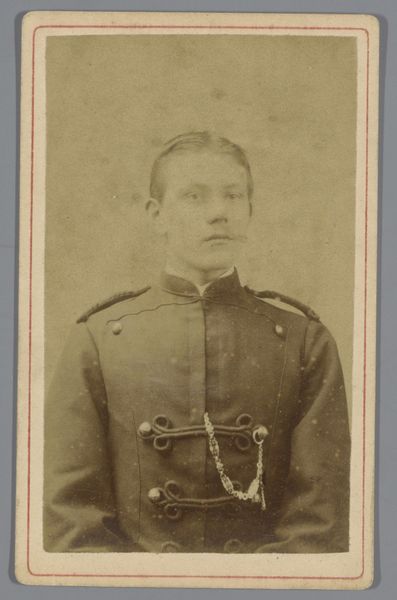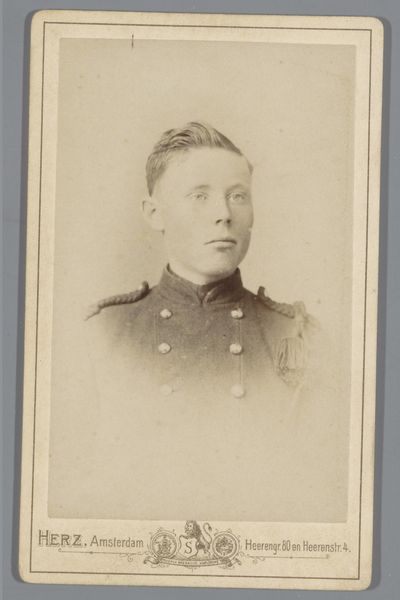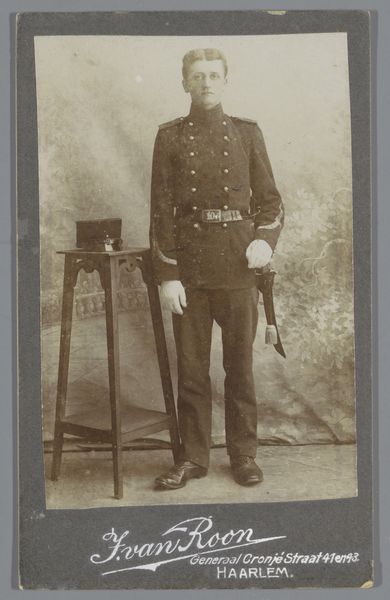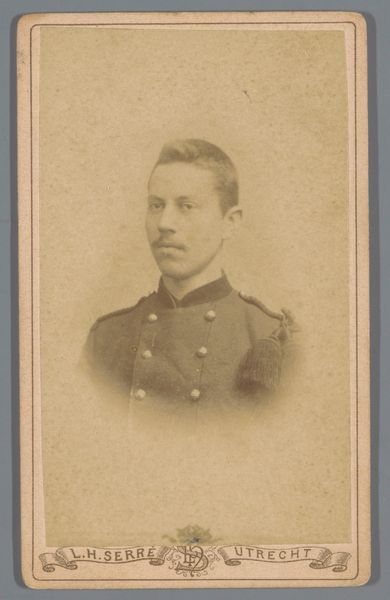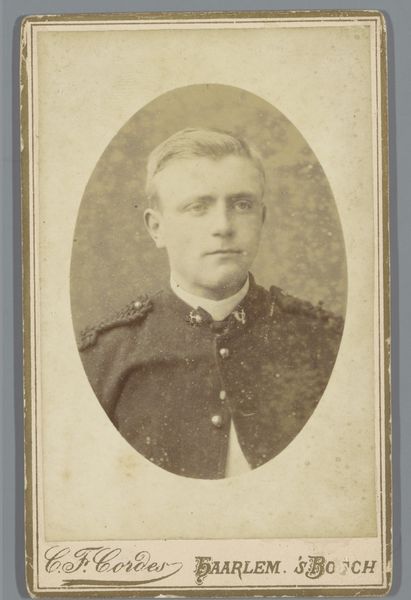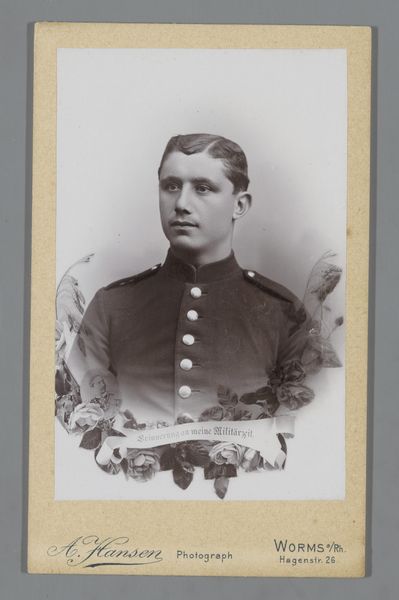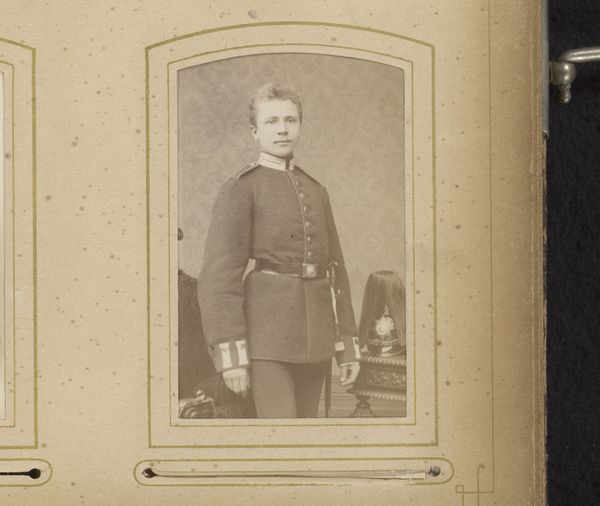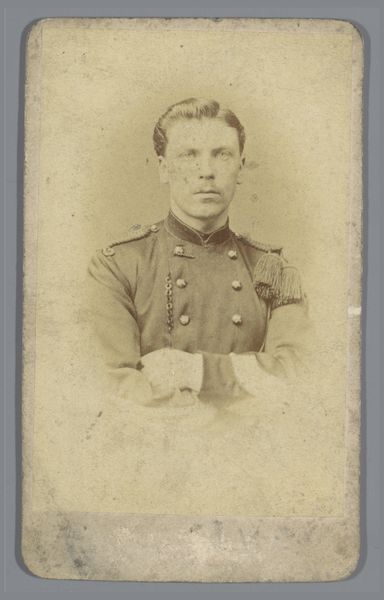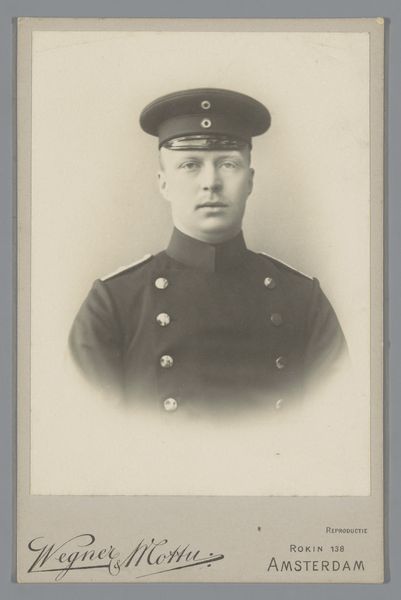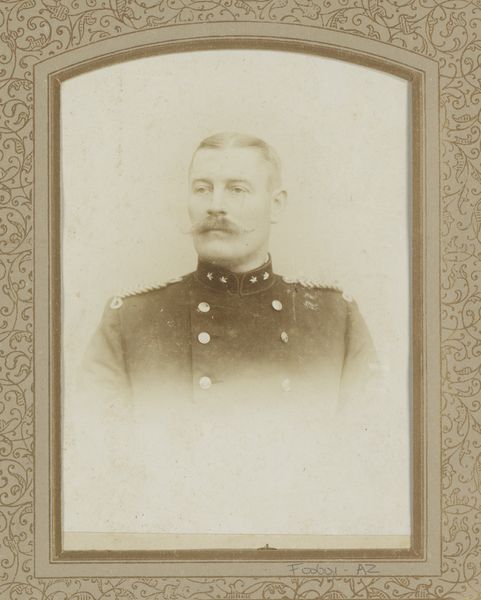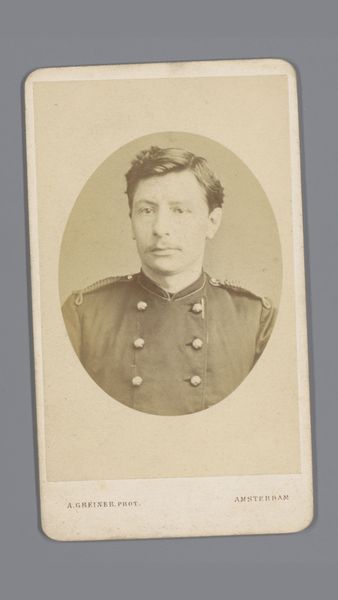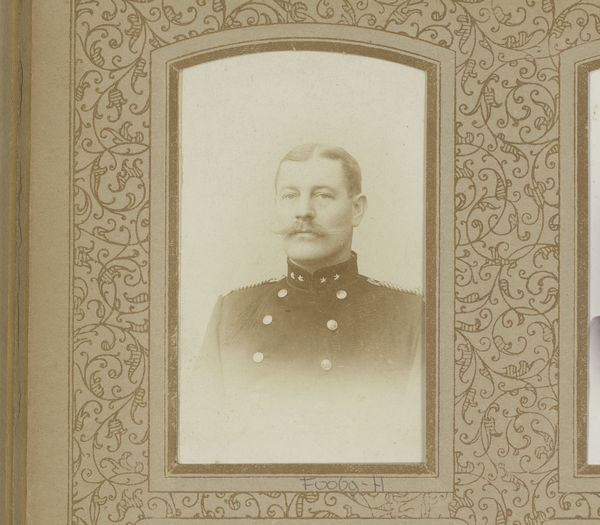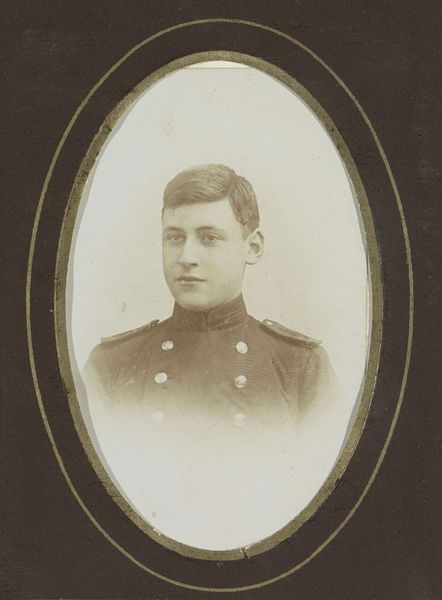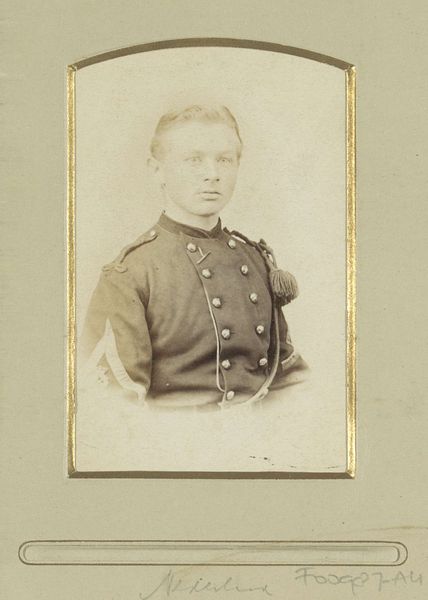
photography, gelatin-silver-print
#
portrait
#
photography
#
gelatin-silver-print
#
realism
Dimensions: height 105 mm, width 64 mm
Copyright: Rijks Museum: Open Domain
Editor: Here we have a gelatin-silver print entitled "Portret van een onbekende man in uniform," dating from 1888 to 1927, attributed to Johannes Jacobus Dirk de Graaf. The anonymous subject, with his close-cropped hair and military garb, projects an air of stoic duty. What do you see when you look at this image? Curator: What I see is a fascinating collision of individual identity and state power. This studio portrait, likely commissioned, presents a carefully constructed image of a man subsumed within the military apparatus. The uniformity of dress flattens individuality. We see his youth but he’s posed to embody discipline. Consider the photographic process itself. A technology often used to document, now used to standardize and even sanitize the image of a soldier. Editor: Sanitizing in what way? Curator: In that the photograph likely obscures any traces of hardship, poverty, or individuality that might detract from the idealized image of a soldier loyal to the state. His anonymous status further reinforces that. It's not about him, but about the role he represents. We have to ask who commissioned this and what its intended purpose was beyond just a simple portrait. Was this about recruitment? National pride? Commemorating military service? Editor: It makes me consider all the portraits like this that must have existed. Were they displayed publicly? Kept privately? Curator: Both, probably. Understanding its function, whether for public consumption or private memory, reveals so much about the social and political values of the period. The rise of photography democratized portraiture but simultaneously amplified its use as a tool of statecraft. It is the perfect propaganda piece in its realism. Editor: That’s an interesting paradox, the tension between individual representation and state agenda. I hadn’t considered that before. Curator: Exactly. By examining the history surrounding its production, distribution, and reception, we can start to unpack its meaning in its own time and what it might tell us today about power and representation.
Comments
No comments
Be the first to comment and join the conversation on the ultimate creative platform.
